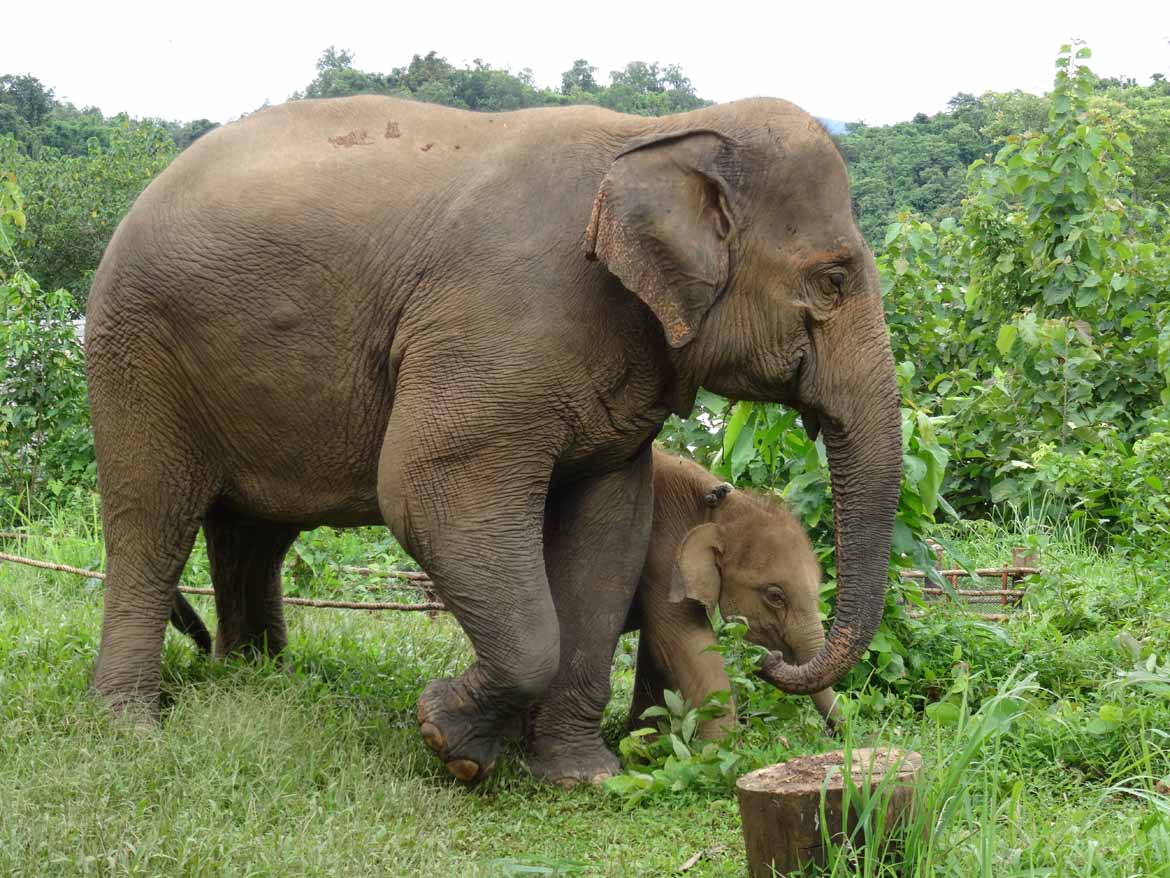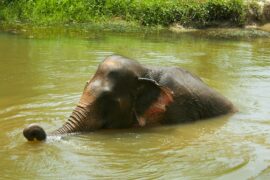This post is part of a series on elephants and elephant conservation in Southeast Asia. Watch this space for more information about these amazing animals and how to visit them in a safe and responsible manner.
Ever since a British tourist was killed by a captive elephant on Koh Samui earlier this year, the ethics of elephant-based tourism have been the talk of the travel industry. It wasn’t the first elephant-related death in tourism and unfortunately it won’t be the last, but this high-profile case has forced sustainably-minded tour operators and agents to take a long hard look at a subject that has often slipped under the radar until now.
Meeting an elephant – and more specifically, riding an elephant – is one of the most popular wish-list activities amongst travellers to Southeast Asia, and for good reason. Elephants are fascinating creatures. They are of course physically monumental, but they’re also one of the most intelligent creatures we know of, exhibiting a wide range of emotions, close family bonds, and distinctive individual personalities. Elephants are even thought to be natural altruists: there are many documented cases of elephants offering their help to other animals in distress, including humans.
The Southeast Asia team Inside Asia Tours are very careful about the elephant experiences they recommend, but until a recent visit to an elephant sanctuary in Laos I hadn’t given a great deal of thought to the subject personally. I have visited and ridden elephants on holiday before, but this time, with recent events fresh in my mind, I was in a more questioning frame of mind. I wanted to know whether the elephants minded being ridden, whether they enjoy interaction with humans, and whether elephant tourism can ever be ethical.
There are no easy answers to these questions. It is an exceedingly complicated problem, and there are all kinds of sources out there with different theories about what is and isn’t good for the elephants. With no obvious authority to turn to it’s difficult for any concerned traveller to know what to do, but hopefully, after reading this blog post, you’ll have enough information to make your own decision.
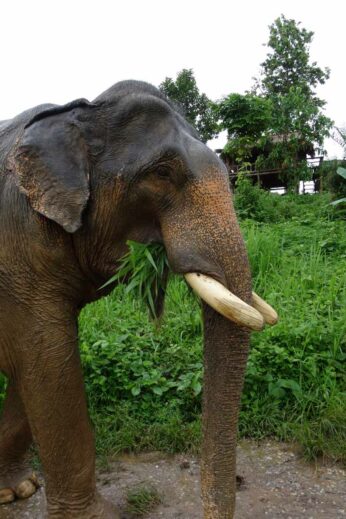
Is tourism necessary to the survival of Asian elephants?
Yes. Without tourism, the reality is that most captive Asian elephants would either have to return to illegal logging or starve, as they are expensive to keep and nobody has yet come up with a better way to raise the funds. The cost involved in caring for an elephant includes not only food, shelter, space, and veterinary care, but a living wage for their handler – who might otherwise be forced to return to illegal logging as a way to support their family. Charity can only do so much, and such a vast proportion of the elephants’ natural habitat has now been destroyed that there is no hope that all captive elephants can ever be reintroduced to the wild.
Not only does elephant tourism ensure the survival of elephants, but in some places plays an integral part in the survival of other endangered species. One notable case is the Chitwan National Park in Nepal, where funds raised by elephant safaris provide the principal means of protecting rare Bengal tigers, Indian rhinos, leopards and other wild elephants in the park. In such cases, conservationists are stuck between a rock and a hard place: the welfare of working elephants, and the protection of other endangered species. Most agree that for the time being, elephant safaris should stay – though only under careful supervision.
Tourism may be a necessity for the present, but it should never be used as an excuse to cause suffering to elephants. Elephant tourism can, and should, be done sensitively, so don’t allow yourself to be fobbed off by sub-par operations who use exploitative practices and tell you it’s the best the elephants can expect. It isn’t.
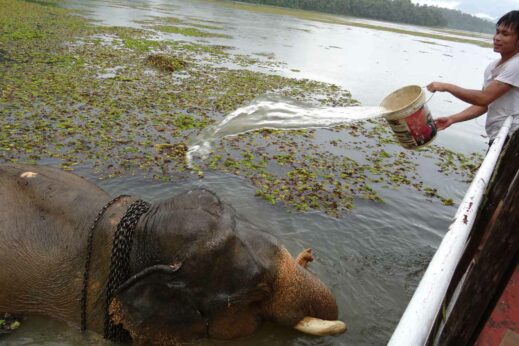
Training elephants: can it ever be ethical?
Most elephants working in tourism in Asia today have been tamed via a brutal method called ‘crushing’ or ‘phajaan’. The process involves tying a young wild elephant down or confining it to a very small cage while subjecting it to a variety of physical tortures, including beatings, sleep deprivation and starvation, in order to break its will. It is a horrifically brutal practice but sadly it still occurs in parts of Southeast Asia, and pain-based training is the only way that many mahouts know how to control their elephants.
At any responsible elephant sanctuary, pain-based training will already have been replaced by positive reinforcement techniques (the classic ‘carrot’ vs ‘stick’ debate). Any rescued logging elephants will almost certainly have been through the ‘crushing’ process before beginning their working lives, but any calves born in captivity are not subjected to this process any more – or shouldn’t be.
Organisations such as Elephant Experts visit elephant camps across Asia to teach owners and mahouts how to train their charges using positive reinforcement, and report that the animals learn much faster, achieve higher precision, and are much safer to work with as a result. What’s more, most mahouts are eager to learn non-pain-based techniques once they see them in action. Most mahouts are reluctant to hurt their elephants unnecessarily, and many already feel uneasy about the systems they have been taught to use.
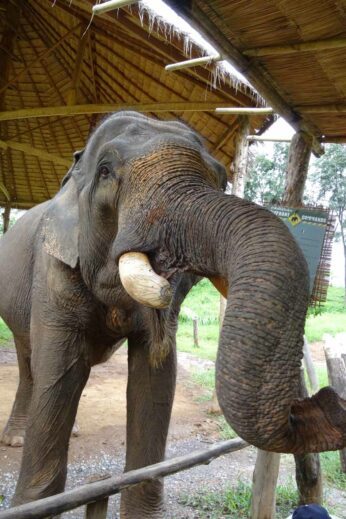
How to spot mistreatment
It’s not always easy to tell whether an elephant ‘sanctuary’ is behaving ethically or not. Sometimes the abuse is carried out when the tourists have gone home, but most of the time, elephant camps use harmful practices because they are unaware of the health risks or distress that they cause. At the elephant sanctuary that I visited in Laos, for instance, the elephants are looked after by a qualified vet, they only give rides for a limited time each day, and they are allowed to roam free at night. But on the other hand, they continue to give rides using howdahs (elephant seats, which can cause back problems), the baby elephants are kept in very small enclosures during the day, and the mahouts hit the animals hard with sticks when they don’t do as they’re told. The sanctuary clearly has the elephants’ best interests in mind, but some aspects of their wellbeing are being neglected.
If you are unsure whether elephants are being mistreated, you can look for certain giveaway signs. Torn or irregular ears can indicate that an elephant has been punished using an ankus, or bullhook (in rescued elephants, this may be a sign of historic abuse); abscesses on the elbows and knees suggest that the elephant is made to lie down on hard surfaces for prolonged periods; foot rot can occur if the elephant is made to stand around on hard ground or in its own urine (source: elephantexperts.org).
Some camps chain the elephants’ front legs together (or a back leg to a front leg) to restrict their movement, but this is distressing to the elephant and causes unnatural weight distribution that can lead to joint problems in later life. The best way to keep captive elephants out of mischief is to allow them to roam free in enclosures secured with electric fences. Where this is not possible, a long chain attached to one leg that allows the elephant some freedom of movement is the best alternative.
Finally, all good elephant sanctuaries should provide their elephants with adequate shade, and water with which to splash themselves or wallow. Elephants do not fare well in intense sunlight as their large bodies retain heat so well that it’s very difficult for them to cool down. The recent sad news of an elephant collapsing while giving rides to tourists at Angkor is evidence of the dangers of this.
If you notice signs of mistreatment at an elephant camp or sanctuary, pass on your comments to the management calmly and respectfully, as getting angry won’t get you very far. You can also leave negative reviews, and advise your travel agent or tour operator (if you have one) of your concerns. The more pressure exerted on camps to look after their elephants, the more likely they are to review their practices and make a positive change!
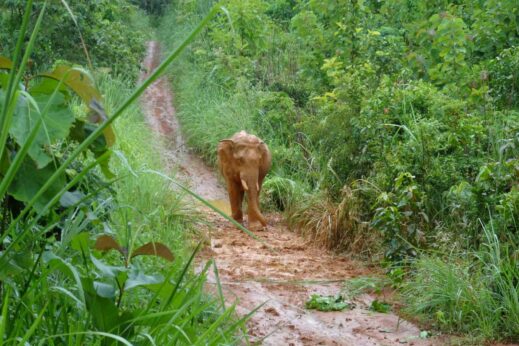
More information
If you would like to know more about elephant welfare, Elephant Experts is an excellent source of well balanced and researched information. It is a non-profit organisation run by a team of experts in various fields, providing education and support to elephant owners across Asia. I am indebted to their website for the information in this article.
In the next blog post in this series, I’ll look into some popular elephant tourism practices such as elephant riding and bathing, and whether these activities have a role in the future of responsible tourism. Click here to read Part #2. If you are interested in meeting elephants in a sustainable, non-exploitative context, take a look at our Indochina Conservation itinerary for ideas.
